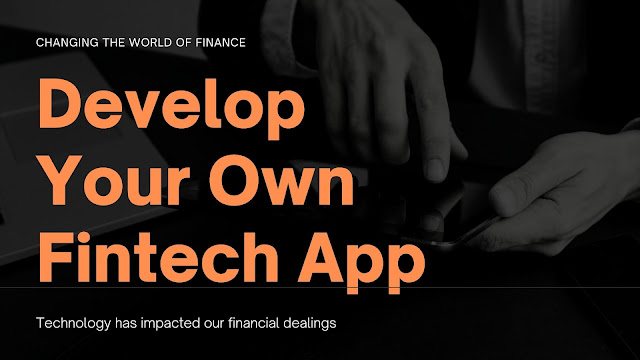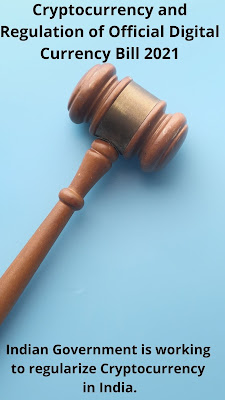How to Develop a Robust
FinTech App?
The fintech industry is booming in the present scenario! A report has been published by Fortune, which states that 90% of Americans are daily
users of Fintech apps to manage their financial lives. Furthermore, World Bank acknowledges
21% soar of fintech businesses in America during the pandemic in its last
year report. It is a ground reason that there was a sudden spike seen in
the Fintech Apps due to the unprecedented time of the 2019 pandemic.
 |
| How to Develop a Fintech App? |
In this article, we will emphasize how to build a robust fintech app for your business?
Steps to Build a Robust Fintech App
Before stepping into the process to develop a fintech
application, let us discuss several pertinent points:
 |
| Fintech App Should Be Secure and Reliable |
- Security
is of Utmost Importance: No doubt that security is the most relevant
factor in developing the fintech app. You have to be ensured that the security
aspect is respected at every step. It will foster a safer environment and
circumvent any breaches in your database.
- Feed
Only Relevant Information: It is not vital to store all the
information (such as the payment cards number) on the app sever. It might lead
to a database breach. So, there are servers that only require the token that recognizes
the billing method, and it will charge the customers according to the token.
Following this step will safeguard the payments database.
Step 1: Formulate a Development Plan
The foremost step to develop a concrete fintech app is analysing
the data prevailing around the fintech industry. Keep a sharp gaze on:
- Competitors
- What is the current status of the fintech industry?
- Ongoing and future development trends.
- Who are your users, and what are their demands?
Relevant planning should be the dire requirement of your
fintech app development. Planning will positively inch your project to build a
robust fintech application, and you can achieve this through the following:
- Thoroughly study the complete fintech market.
- Scrutinize what your competitors are offering.
- Point out the problems.
- Brainstorming to deal with issues.
- Selecting the pre-eminent solutions.
- Choosing an operating system that is according to your
program.
 |
| Planning bridges the gap between your idea and final output. |
Step 2: Construct a Design
It is prudent to build a prototype of your app, and it can
illustrate the following concepts:
- Application’s logic
- App structure
- Arrangement of design elements
- Images and content in the application.
Step 3: Develop User Interface (UI) &
User Experience (UI)
As your prototype is built, you can inch towards developing
UI and UX design for your fintech application. Customers are always attracted
where they find security and transparency of their financial assets.
Based on this fact, you should develop a UX/UI design of
your application that delivers:
- Useful Account
- Ease of Use
- Transparency
- Security
Step 4: Select a Top Technology Stack
Myriads of technology stacks are prevailing in the market,
and you have to select a top technology stack for your fintech app. Several
fintech apps failed due to the wrong selection of technology stack.
Moreover, a well-researched technology stack will:
- Be economical to the project.
- Reduce the app development time.
Step 5: Generate the application’s code
You can manage this situation in two ways:
- Your in-house software development team will operate.
- Outsource your work to a pioneer in the software development
of banking applications.
Application code requires your full attention! There can be
unfortunate events, for example, data breaches, which can hamper app security.
 |
| Your App Codes Should Be Bug Free |
Therefore, the application code should operate across all
devices and operating systems. In case there erupts a predicament, then
software programmers can act swiftly on it. Furthermore, if the code requires
any changes, then it can also be managed.
Step 6: Work on API Security Strategy
An effective API strategy will assist in:
- App functionality
- App Data
- Content
- Data Security
APIs are handy when you want to:
- Block Anonymous Traffic
- Manage the calls made to API
- Pinpoint usage design in API's traffic
- Filter Logs
There are 2 ways through which API Keys offer project authorization:
- Project Identification
- Project Authorization
You have to strategize the API keys for your fintech app. If
you want to know more about the API and its relevancy for your project, you can
visit here.
Step 7: Apply 2FA Mechanism
Be ascertain that your payment app is impervious to any data
breaches. Hence, a fool-proof authentication and identification system is
required for app security. It is better to implement Two-factor Authentication
(2FA) to better safeguard:
- A user's credentials.
- The resources the user can access.
Make sure that a proper balance is maintained. A user can
log in to the app without any constrain, and all potential loopholes are
closed.
Step 8: App Release & Future Updates
The important part of the app development is to release your
app on the major platforms, such as:
See beforehand that your app is polished for the release.
Your development team or outsourced team will assist you with a smoother
release.
You have to adhere to all the online platform policies to
release your application, as each has its regulations for banking app
developers. Now, your app will generate feedbacks and ratings after the release
from the customers.
What to do after the app release?
After you have released your application, you have to manage
- Release timely updates of the app.
- Invest in Marketing & Analytics Software
- Work on feedback from your customers.
- Run campaigns for your app.
Wrapping Up
Fintech App development is a journey that requires years of
experience and skills to produce it. There should be a proper analysis of the
market and customer behavior by the team.
Ask your team to execute proper testing so that you are
apprised of its bugs beforehand and then work on troubleshooting steps to
mitigate the errors. It will surely minimize your costs and time.
Polish your app before releasing it on the platforms, in
turn making your customer fully satisfied.
Source:
- Fortune Report: https://fortune.com/2021/10/12/plaid-fintech-use-adoption-us-consumers-baby-boomers/
- World Bank Report: https://www.worldbank.org/en/news/press-release/2020/12/03/fintech-market-reports-rapid-growth-during-covid-19-pandemic







